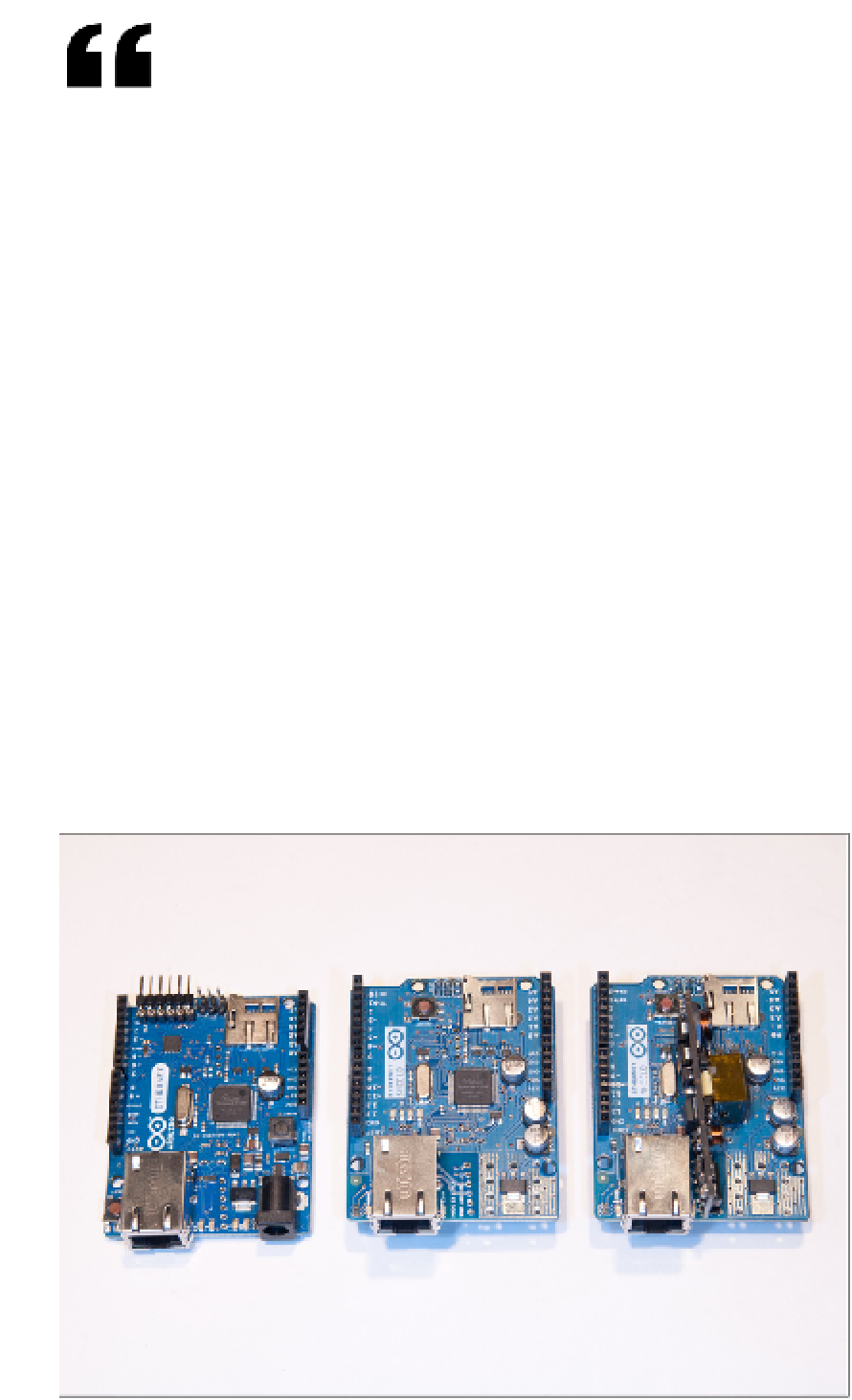Hardware Reference
In-Depth Information
Introducing Network Modules
It's possible to write a program for a microcontroller that can manage all the steps
of network communication, from the physical and data connections to the network
address management to the negotiation of protocols like SMTP and HTTP. A code
library that encompasses all the layers needed for network connections is called a
network stack
, or
TCP/IP stack
. However, it's much easier to use a network interface
module to do the job.
There are many such modules on the market, with varying
prices and features. Just as you can choose how technical
you want to get when you pick a microcontroller platform,
you can also choose your technical level when you select
a network controller. Some modules—like Rabbit Semi-
conductor's RabbitCore processors—come with all the
source code for a TCP/IP stack, and expect you to modify
it for your needs and program the device yourself. Others,
like the Beagle Board, are a full network computer on a
single circuit board. These are very powerful, and if you're
an experienced network programmer, they present a very
comfortable programming environment. However, they
don't make it easy to add sensors and actuators, and for
people not experienced with network programming, they
present a steep learning curve. Others—like Lantronix'
modules, the XPort, XPort Direct, MatchPort, and WiPort—
have a stack programmed into their firmware, and present
you with a serial, telnet, or web-based interface. These are
much simpler to use. The web interface gives you access
from the browser of your personal computer; the telnet
interface gives you access from a server or your personal
computer; and the serial interface gives you access from
a microcontroller. These are serial-to-Ethernet modems.
They work much like the Bluetooth modems you used
in Chapter 2, but they have a different serial protocol.
These are a comfortable beginning place, and I used them
extensively in the first edition of this topic. For this edition,
however, you'll learn about Ethernet modules that have a
synchronous serial interface. These offer the ease-of-use
of the Serial-to-Ethernet modules, but they don't take up
Figure 4-2
The Arduino Ethernet (left),
an Arduino Ethernet shield
(center), and an Ethernet shield
with power-over-Ethernet
module attached (right). You
can use any of these for the
Ethernet projects in this topic.




